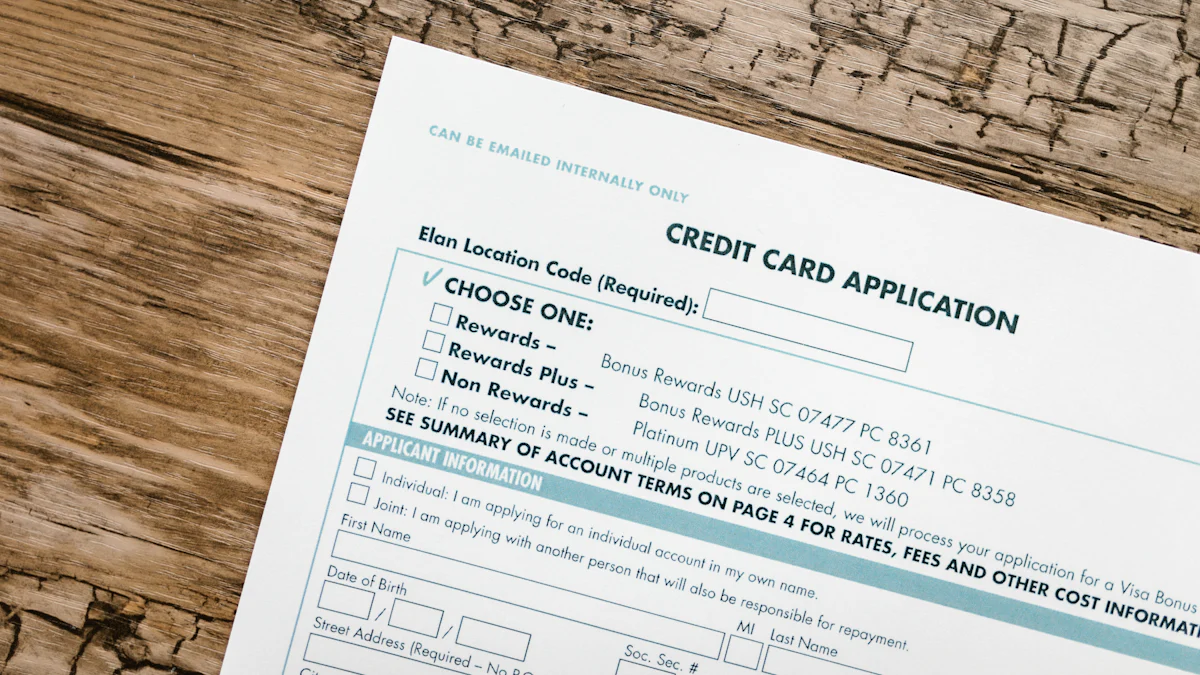Advantages and Disadvantages of Credit Cards with Annual Fees

Advantages and Disadvantages of Credit Cards with Annual Fees
Image Source: pexels
I often hear people ask if credit cards with annual fees are worth it. These cards can offer incredible perks, but they come at a cost. I’ve found that understanding the balance between benefits and fees is key. A credit card rewards vs annual fee comparison can help you decide if the trade-off makes sense.
Key Takeaways
-
Credit cards with yearly fees often give better rewards and perks.
-
These cards are great for people who travel or spend a lot.
-
Using them smartly can boost your credit score over time.
-
They usually have higher limits, which help manage spending well.
-
Always check the benefits and costs before picking a credit card.
- Choose one that matches how you spend and your money goals.
Advantages of Credit Cards with Annual Fees
Access to Premium Rewards Programs
Credit cards with annual fees often give better rewards. These rewards include travel points, cashback, or special discounts. For example, travel cards may offer free flights or hotel stays. Here’s a simple comparison of card types and their features:
| Type of Card | Description |
|---|---|
| Starter Cards | For people with little or bad credit. |
| Travel Rewards Cards | Provide perks and benefits tied to premium rewards. |
If you travel often or spend in certain areas, these rewards can be worth the fee.
Exclusive Perks and Benefits
These cards also come with special perks. Many offer free hotel stays, travel credits, or airport lounge access. For example:
-
Marriott Bonvoy Boundless® Credit Card: $95 fee, includes one free night yearly.
-
Hilton Honors American Express Aspire Card: $550 fee, offers $400 in resort credits and a free night.
- Southwest Rapid Rewards® Premier Credit Card: $99 fee, gives 6,000 points every year.
Other perks include trip insurance, lost luggage coverage, and no foreign transaction fees. These are great for people who travel a lot.
Higher Earning Potential for Frequent Users
Frequent users can earn more rewards with these cards. Many cards give higher points for spending on dining, travel, or groceries. If you plan your spending, the rewards can make the fee worth it.
Credit-Building Opportunities
Using these cards wisely can improve your credit score. Cards with annual fees often have higher limits, which helps your credit usage. This is useful if you’re saving for big goals like a house or car.
Travel and Purchase Protections
These cards also offer travel and purchase protections. They may include trip delay coverage, rental car insurance, and emergency help. Here’s a list of common protections:
| Type of Protection | Description |
|---|---|
| Trip Delay Reimbursement | Pays for costs caused by trip delays. |
| Rental Car Insurance | Covers theft or damage if you use the card. |
| Trip Cancellation/Interruption Insurance | Refunds non-refundable travel costs if plans change. |
| Emergency Evacuation and Transportation | Covers emergency travel needs. |
| Roadside Assistance Services | Offers towing or tire help anytime. |
Some cards also extend warranties or refund price drops on items. These features save money and reduce worries.
By comparing the benefits and fees, you can decide wisely. A rewards vs annual fee check helps you see if the card fits your goals.
Disadvantages of Credit Cards with Annual Fees
High Annual Costs
Credit cards with annual fees can cost a lot. The fee depends on the card type. Basic cards may charge about $50 yearly. Premium cards can cost nearly $700. Here’s a simple table:
| Card Type | Average Annual Fee |
|---|---|
| Basic Cards | Around $50 |
| Premium Cards | Nearly $700 |
If you don’t use the perks often, the fees may not be worth it. Comparing rewards and fees helps decide if the card is a good choice.
Potential for Overspending
Using credit cards can lead to spending too much. This happens because of how our brains work. For example:
-
Buying on impulse feels exciting and rewarding.
-
People may spend more to fit in with others.
- Debt feels normal, so overspending becomes a habit.
Studies show people spend more with cards than cash. High limits can make you think you can afford more. To avoid this, treat your card like cash. Only spend what you can pay off right away. Budgeting also helps control spending.
Limited Value for Infrequent Users
If you rarely use your card, the fee may not be worth it. Some people pay for perks they never use. This often happens if they don’t travel or shop online much. Comparing rewards and fees can help you decide if the card fits your needs.
Hidden Fees and Restrictions
Cards with annual fees may have extra costs. These include interest, foreign transaction fees, and the yearly fee. Here’s a table of common fees:
| Fee Type | Description |
|---|---|
| Annual Fee | A yearly cost for having the card. |
| Finance Charge | Interest added if you don’t pay in full. |
| Foreign Transaction Fee | A fee for buying things in another currency. |
To avoid surprises, check the card’s terms and fees. Look at the Schumer Box or ask customer service for details.
Risk of Neglecting Cheaper Alternatives
Some people skip no-fee cards that might work better. These cards give rewards without charging a fee. If you don’t use all the perks, a no-fee card could save money. Comparing cards helps find the best one for your spending habits.
Credit Card Rewards vs Annual Fee Comparison

Image Source: pexels
Looking at Rewards and How to Use Them
When picking a credit card, check the rewards and how easy they are to use. Cards with annual fees often give better rewards. For example:
-
No-fee cards may offer about 1% cash back.
- Annual fee cards usually start at 2% cash back and can go up to 3% for things like groceries or gas.
Annual fee cards also have bigger welcome bonuses. A no-fee card might give 20,000 miles for spending $500, worth about $200. But an annual fee card could offer 75,000 miles for spending $4,000, worth around $750. If you plan your spending well, these rewards can cover the fee.
Comparing No-Fee Cards and Annual Fee Cards
No-fee cards save money upfront but lack extra perks. Cards with fees usually have better rewards, bonuses, and travel benefits. For example:
-
Annual fee cards often include trip insurance, lost luggage coverage, and no foreign transaction fees.
- No-fee cards rarely offer these extras.
If you don’t travel or spend much, a no-fee card might be better. But if you use your card a lot, the perks of an annual fee card can be worth it.
Matching Cards to Your Spending and Lifestyle
Choosing the right card means thinking about your needs. Ask yourself:
-
Do I want to build credit, earn rewards, or pay for something big?
- Do I spend a lot on travel, food, or groceries?
Also, think about the card’s credit limit and safety features. A higher limit gives more spending room, and good security protects against fraud. Finally, check the card company’s customer service. Good support makes using your card easier.
By picking a card that fits your life, you can get more rewards and save money. Comparing rewards and fees helps you find the best card for you.
Credit cards with annual fees can be worth it if you use their perks wisely. Look closely at the benefits and costs before deciding. Consider how you spend money and what you need. Ask yourself if the rewards match your goals.
💡 Tip : Compare different cards to choose the one that works best for you.
FAQ
What should I think about before picking a credit card with an annual fee?
Look at how you spend and live. Check the rewards, perks, and fees. Decide if the benefits are worth the cost for you.
💡 Tip : Try a rewards calculator to see how much you could save.
Can I switch to a no-fee card from one with an annual fee?
Yes, most companies let you switch to no-fee cards. Call customer service to learn your choices. This keeps your card open and protects your credit score.
How can I get the most out of a card with an annual fee?
Spend on things that give high rewards. Use perks like free travel credits or lounge access. Always pay your bill fully each month to skip interest.
✈️ Pro Tip : Plan trips to match your card’s travel perks and save more.